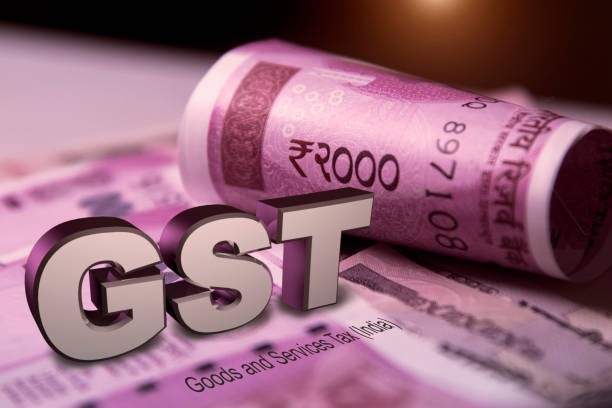What is GST
The government imposes the goods and services tax (GST) in place of numerous indirect levies. Any business offering sale of goods with an annual turnover of 40 lacs or service with an annual turnover of 20 lacs would require to do GST registration and should have a valid GST Number. On March 29, 2017, the Goods and Services Tax Act was approved by the Parliament. The first of July 2017 have seen the implementation of this Act. Every value addition is subject to the GST, a comprehensive, multistage, destination-based tax.
GST is charged when goods and services are supplied. Every value addition is subject to this comprehensive, multi-stage, destination-based tax. As a result, GST is now the only domestic indirect tax law that applies to the entire nation. Every point of sale is taxed under the GST system.
Customers, purchasers, or consumers pay the GST, which is then forwarded to the government by the businesses and organisations that sell the goods. GST generates income for the government as a result. Before being purchased, the total cost of all products and services includes the GST. All previous indirect taxes levied by the national government and state governments in India are eliminated by this tax. The firms must have registered for GST in order to be eligible for this.
what are the GST registration guidelines as per the government of India?
The GST registration guidelines specified who should register, hence the government has supplied a list of all possible suppliers or customers:
- Individuals who registered under the previous tax regulations, such as excise, VAT, service tax, etc.
- Companies with annual revenue over the highest reaches of Rs. 40 Lakhs (Rs. 10 Lakhs for states including North-Eastern States, J&K, Himachal Pradesh, and Uttarakhand)
- Managers of a distributor and supplier of input services
- A casual taxable person is a person who sporadically provides taxable products or services in a taxable region. There is no fixed location for the business; instead, it shifts from one location to another.
- People who are being taken into account for the reverse charge mechanism include: Reverse Charge means that the tax charge is reversed and the receiver is now responsible for paying it.
- Every online buyer and seller
- A supplier through an e-commerce aggregator
- All people who, other than an enlisted taxable person, provide online data and database access or recovery administrations to a person in India are eligible for GST registration.
What are the types of GST?
The Indian government claims that there are four different forms of GST. Integrated Goods and Services Tax (IGST), State Goods and Services Tax (SGST), Central Goods and Services Tax (CGST), and Union Territory Goods and Services Tax (UTGST).
There are various GST types.
- CGST: Goods and services are subject to the CGST (Central GST). The interstate supply tax is imposed and administered by the central government. Revenue received under the CGST will be retained by the central government.
- SGST: The State Government imposes SGST, which is a tax on intrastate deliveries of both goods and services, and the SGST Act will be responsible for its administration. The state government is in charge of collecting the money. However, the central government alone is in charge of the state government’s core functions.
- IGST: IGST is assessed when goods and services are supplied from one state to another. Consequently, it is referred to as the interstate tax. The supplies of goods and services, whether imported into India or exported from India, are also subject to this tax. The Indian government is in charge of collecting the money.
- Major union territories in India include Delhi (India’s Capital Territory), Chandigarh, Dadra & Nagar Haveli, Andaman & Nicobar Islands, Daman & Diu, Lakshadweep, and Puducherry. All of these union territories are subject to UTGST. The union territory government is in charge of collecting the money. Only the CGST is assessed, not the UTGST.
What is the structure of GST?
GST was created with the average person’s condition and inflation rates in mind. GST was organised into four tiers to make it easier and simpler. These four areas have different GST rates: zero, low, standard, and high.
- Zero rates: The goods and services are subject to zero rates of taxation. This tax is equivalent to tax exemptions and has no impact on the product’s actual price. Whether or not the government decides to raise the tax rates in the future, the GST structure’s zero rates will keep the price of necessities in check.
- Standard rate: This covers the tax rates of 12% and 18%. In this case, the council has decided on two standard rates to keep inflation under control.
- Higher rates: Taxes with higher rates include a 28% tax rate. Products like washing machines, air conditioners, soft drinks, etc. are included in this. Previously, this 27% tax increased to 30–31% due to the cascading effect. However, it becomes fixed at 28% as a result of this higher rate tax.
What are the 5 slabs of GST?
The five GST slabs—0%, 5%, 12%, 18%, and 28%—are roughly categorised into the four levels. Zero rate, lower rate, standard rate, and higher rate are the four options.
- Zero rates: The goods and services are subject to zero rates of taxation. This tax is equivalent to tax exemptions and has no impact on the product’s actual price. Whether or not the government decides to raise the tax rates in the future, the GST structure’s zero rates will keep the price of necessities in check.
- Standard rate: This covers the tax rates of 12% and 18%. In this case, the council has decided on two standard rates to keep inflation under control.
- Higher rates: Taxes with higher rates include a 28% tax rate. Products like washing machines, air conditioners, soft drinks, etc. are included in this. Previously, this 27% tax increased to 30–31% due to the cascading effect. However, it becomes fixed at 28% as a result of this higher rate tax.
What are the products and services that come under GST?
Consumables including sugar, coal, coffee, tea, packaged paneer, raisins, edible oil, PDS Kerosene, home LPG, skim milk powder, cashew nuts, footwear under Rs. 500, infant formula, and clothing are all included under the under 5% slab.
Butter, laptops, ghee, processed or packaged food, almonds, mobile phones, fruit juice, and dishes made from vegetables, fruits, nuts, or other plant components, such as pickled murabba, chutney, jam, jelly, packed coconut water, and umbrellas, fall under the 12% slab.
Hair oil, investment products, toothpaste, industrial intermediaries, soap, ice cream, pasta, toiletries, corn flakes, computers, soups, and printers are among the items that fall within the 18% slab.
Small automobiles (+1% or 3% cess), high-end motorcycles (+15 cess), consumer durables like refrigerators and air conditioners, luxury and sinful goods like BMWs, aerated drinks (+15 cess), and cigarettes are all included in the under-28% slab.
Which are the products and services exempted by GST?
Exempted products:
Food includes cereals, perishable fruits and vegetables, edible roots and tubers, fish and meat, tender coconut, jaggery, tea leaves that haven’t been processed, coffee beans that haven’t been roasted, seeds, ginger, turmeric, betel leaves, papad, flour, curd, lassi, buttermilk, and supplements for fish.
Raw materials include unprocessed silk, unfinished wool, raw cotton used to make khadi yarn, unprocessed jute, firewood, charcoal, and handloom garments.
Tools include things like: hearing aids, hand equipment (such spades and shovels), agricultural tools, and hand-made musical instruments.
Agriculture services are included on the list of exempted services. These services include harvesting, fumigation, cultivation, packaging, renting, buying, or leasing machines for agricultural use, activities involving warehouses, and the provision of farm labour.
Transportation Service: Inland waterway transportation of goods, Air travel is used for passenger transport (in the conditions of Manipur, Meghalaya, Assam, Arunachal Pradesh, Nagaland, Sikkim, Tripura, and Bagdogra), transporting goods without air conditioning, transporting milk, salt, papers, or woodgrains, transporting goods for which the total amount charged is less than Rs. 1500.
Transportation for students and faculty, catering for lunchtime, security, housekeeping, and services for admission, exams, etc. are all examples of educational services.
Medical services include those offered by a veterinary clinic, clinics, paramedics, ambulances, charitable organisations, and groups that facilitate religious pilgrimage.
How does the central govt and state govt revenue share the GST?
In India, a federal state, both the centre and the states have the authority to levy and collect taxes. According to the Constitution, both governments must raise tax money to fund a variety of commitments.
GST is imposed concurrently by the Center and the States.
Assume that Manufacturer A sells 10,000 rupees worth of goods to Dealer B in Uttar Pradesh.
Dealer B sells them to Trader C in Madhya Pradesh for Rs 17,500 retail.
In Madhya Pradesh, trader C eventually sells to end-user D for Rs. 30,000.
Assume that the applicable GST rates are CGST = 9%, SGST = 9%, and IGST = 9 + 9 = 18%. This is an intra-state sale because A sells it to B within the state of Uttar Pradesh; as a result, CGST and SGST will be applied at 9%.
Traders buy C (Madhya Pradesh) from Dealer B (Uttar Pradesh). With IGST of 18%, this transaction is also interstate.
Since end-user D purchases from Trader C (Madhya Pradesh) in the same state, both CGST and SGST are taken into account and will be applied at 9% each, or equally divided.
Since GST is a tax on consumers, the state where the goods were sold would pay GST (Madhya Pradesh). By that logic, Uttar Pradesh (where the items were sold) wouldn’t pay any taxes. Madhya Pradesh and the federal government (30,000 * 9%) will each have 2,700 representatives at the state level. Since GST is a tax on consumers, the state where the goods were sold would pay GST (Madhya Pradesh). By that logic, Uttar Pradesh (where the items were sold) wouldn’t pay any taxes. Madhya Pradesh and the federal government (30,000 * 9%) will each have 2,700 representatives at the state level.
The 900 rupee SGST credit (used for the IGST payment) would then need to be transferred from Uttar Pradesh, the exporting state, to the Centre.
In return, the central government will give the importing state of Madhya Pradesh Rs. 450 in IGST.
How to find HSN number or Service tariff code for GST
“Harmonized nomenclature system” is the meaning of the HSN code. This technique is used all around the world to classify things systematically. The six-digit HSN code is a standardised number that categorises more than 5000 products and is used all over the world. It was created by the World Customs Organization (WCO), and it went into effect in 1988.
Services Accounting Code (SAC) under GST: For consistent recognition, measurement, and taxes, goods and services that are likely to be related to one another are also categorised. Services Accounting Code, or SAC, is the name of the codes used for these services.
The HSN structure consists of 21 sections, 99 Chapters beneath them, and approximately 1,244 headings and 5,224 subheadings.
Many Chapters are included in each Section. Each chapter has headings that are further subdivided into subheadings.
While the headings and subheadings give comprehensive explanations of the products, the titles of the sections and chapters describe the many kinds of commodities.
The goal of HSN codes is to make and promote GST internationally.
The requirement to publish a thorough product summary is eliminated by HSN codes. This would reduce time spent on filing and make it simpler because GST tax filing returns are automated. Eight digits can represent the HSN code, and each digit has a specific meaning:
The Chapter under HSN codes is indicated by the first two numbers.
The next two digits indicate the headings under Chapters.
The following two digits denote the subheadings, and the six-digit HSN code is recognised globally.
The product tariff heading during supply import and export is subclassified by the following two numbers.
GST Returns Types
Under GST, there are 13 returns. The GSTR-1, GSTR-3B, GSTR-4, GSTR-5, GSTR-5A, GSTR-6, GSTR-7, GSTR-8, GSTR-9, GSTR-10, GSTR-11, CMP-08, and ITC-04 are those documents. All results, however, do not apply to every taxpayer. Depending on the kind of taxpayer/type of registration acquired, taxpayers file returns.
A self-certified reconciliation statement in Form GSTR-9C must also be submitted by eligible taxpayers, defined as those with a turnover exceeding Rs. 5 crore.
The GSTR-2A (dynamic) and GSTR-2B statements of input tax credit are available to taxpayers in addition to the GST returns that must be filed (static). Small taxpayers who are registered under the QRMP programme may also use an invoice furnishing facility (IFF) to submit their business-to-business (B2B) sales for the first two months of the quarter. These small taxpayers will still have to submit Form PMT-06 each month to pay their taxes.
Here is a list of all the returns that must be submitted in accordance with the GST Law, together with their respective deadlines.
| Return Form | Description | Frequency | Due Date |
| GSTR-1 | Details of outward supplies of taxable goods and/or services affected. | Monthly | 11th of the next month. |
| Quarterly (If opted under the QRMP scheme) | 13th of the month succeeding the quarter. | ||
| IFF (Optional by taxpayers under the QRMP scheme) | Details of B2B supplies of taxable goods and/or services affected. | Monthly (for the first two months of the quarter) | 13th of the next month. |
| GSTR-3B | Summary return of outward supplies and input tax credit claimed, along with payment of tax by the taxpayer. | Monthly | 20th of the next month. |
| Quarterly (For taxpayers under the QRMP scheme) | 22nd or 24th of the month succeeding the quarter*** | ||
| CMP-08 | Statement-cum-challan to make a tax payment by a taxpayer registered under the composition scheme under Section 10 of the CGST Act. | Quarterly | 18th of the month succeeding the quarter. |
| GSTR-4 | Return for a taxpayer registered under the composition scheme under Section 10 of the CGST Act. | Annually | 30th of the month succeeding a financial year. |
| GSTR-5 | Return to be filed by a non-resident taxable person. | Monthly | 20th of the next month.
(Amended to 13th by Budget 2022; yet to be notified by CBIC.) |
| GSTR-5A | Return to be filed by non-resident OIDAR service providers. | Monthly | 20th of the next month. |
| GSTR-6 | Return for an input service distributor to distribute the eligible input tax credit to its branches. | Monthly | 13th of the next month. |
| GSTR-7 | Return to be filed by registered persons deducting tax at source (TDS). | Monthly | 10th of the next month. |
| GSTR-8 | Return to be filed by e-commerce operators containing details of supplies effected and the amount of tax collected at source by them. | Monthly | 10th of the next month. |
| GSTR-9 | Annual return by a regular taxpayer. | Annually | 31st December of the next financial year. |
| GSTR-9C | Self-certified reconciliation statement. | Annually | 31st December of the next financial year. |
| GSTR-10 | Final return to be filed by a taxpayer whose GST registration is cancelled. | Once, when the GST registration is cancelled or surrendered. | Within three months of the date of cancellation or date of cancellation order, whichever is later. |
| GSTR-11 | Details of inward supplies to be furnished by a person having UIN and claiming a refund | Monthly | 28th of the month following the month for which statement is filed. |
| ITC-04 | Statement to be filed by a principal/job-worker about details of goods sent to/received from a job-worker | Annually
(for AATO up to Rs.5 crore)
Half-yearly (for AATO > Rs.5 crore) |
25th April where AATO is up to Rs.5 crore.
25th October and 25th April where AATO exceeds Rs.5 crore.
(AATO = Annual aggregate turnover) |
Get in touch for any kind of help and information
Legal Door is one of the best team of Lawyer in Gaur City who provides top class legal services also top rated advocate in Gaur City
Our head office address:
O-402, 4th Floor, Addela Mart, Raksha Addela, Gaur City 2, Greater Noida West, G.B. Nagar, U.P. – 201318
Call for help:
+91-9811765737
Mail us for information
info@legaldoor.in
legaldoorindia@gmail.com








